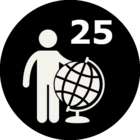I am trying to find a way of identifying points that fall on a line, but not at a vertex or an end point. I can use SpatialRelator (contains/touches) to locate points that match vertices or end points of a line, but currently don't have a method for selecting those that fall purely on the 'edge'. I am basically trying to recreate the 'select by location - within/completely within' functionality in ArcMap. It would be good if I could do this without having to use Python to call Esri functionality.
This post is closed to further activity.
It may be an old question, an answered question, an implemented idea, or a notification-only post.
Please check post dates before relying on any information in a question or answer.
For follow-up or related questions, please post a new question or idea.
If there is a genuine update to be made, please contact us and request that the post is reopened.
It may be an old question, an answered question, an implemented idea, or a notification-only post.
Please check post dates before relying on any information in a question or answer.
For follow-up or related questions, please post a new question or idea.
If there is a genuine update to be made, please contact us and request that the post is reopened.










